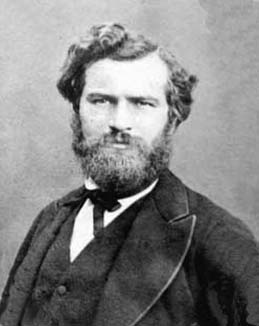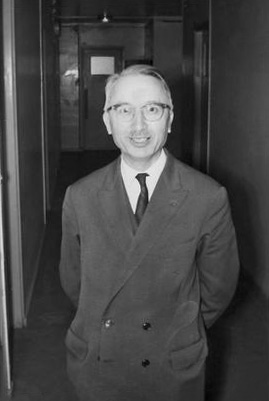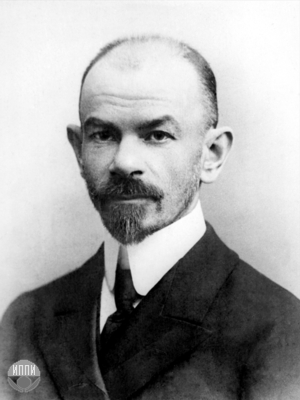
Marie Ennemond Camille Jordan was a French mathematician, known both for his foundational work in group theory and for his influential Cours d'analyse.

Henri Paul Cartan was a French mathematician who made substantial contributions to algebraic topology.

Pierre Joseph Louis Fatou was a French mathematician and astronomer. He is known for major contributions to several branches of analysis. The Fatou lemma and the Fatou set are named after him.

Charles-Jean Étienne Gustave Nicolas, baron de la Vallée Poussin was a Belgian mathematician. He is best known for proving the prime number theorem.

Ernst Leonard Lindelöf was a Finnish mathematician, who made contributions in real analysis, complex analysis and topology. Lindelöf spaces are named after him. He was the son of mathematician Lorenz Leonard Lindelöf and brother of the philologist Uno Lorenz Lindelöf.

Jean Frédéric Auguste Delsarte was a French mathematician known for his work in mathematical analysis, in particular, for introducing mean-periodic functions and generalised shift operators. He was one of the founders of the Bourbaki group. He was an invited speaker at the International Congress of Mathematicians in 1932 at Zürich.

Francesco Severi was an Italian mathematician. He was the chair of the committee on Fields Medal on 1936, at the first delivery.
In mathematics, precisely in the theory of functions of several complex variables, a pluriharmonic function is a real valued function which is locally the real part of a holomorphic function of several complex variables. Sometimes such a function is referred to as n-harmonic function, where n ≥ 2 is the dimension of the complex domain where the function is defined. However, in modern expositions of the theory of functions of several complex variables it is preferred to give an equivalent formulation of the concept, by defining pluriharmonic function a complex valued function whose restriction to every complex line is a harmonic function with respect to the real and imaginary part of the complex line parameter.
The Séminaire Nicolas Bourbaki is a series of seminars that has been held in Paris since 1948. It is one of the major institutions of contemporary mathematics, and a barometer of mathematical achievement, fashion, and reputation. It is named after Nicolas Bourbaki, a group of French and other mathematicians of variable membership.

Dmitri Fyodorovich Egorov was a Russian and Soviet mathematician known for contributions to the areas of differential geometry and mathematical analysis. He was President of the Moscow Mathematical Society (1923–1930).

Dimitrie D. Pompeiu was a Romanian mathematician, professor at the University of Bucharest, titular member of the Romanian Academy, and President of the Chamber of Deputies.
Alexandru Ghika was a Romanian mathematician, founder of the Romanian school of functional analysis.
In mathematics, the Pompeiu problem is a conjecture in integral geometry, named for Dimitrie Pompeiu, who posed the problem in 1929, as follows. Suppose f is a nonzero continuous function defined on a Euclidean space, and K is a simply connected Lipschitz domain, so that the integral of f vanishes on every congruent copy of K. Then the domain is a ball.

Thierry Aubin was a French mathematician who worked at the Centre de Mathématiques de Jussieu, and was a leading expert on Riemannian geometry and non-linear partial differential equations. His fundamental contributions to the theory of the Yamabe equation led, in conjunction with results of Trudinger and Schoen, to a proof of the Yamabe Conjecture: every compact Riemannian manifold can be conformally rescaled to produce a manifold of constant scalar curvature. Along with Yau, he also showed that Kähler manifolds with negative first Chern classes always admit Kähler–Einstein metrics, a result closely related to the Calabi conjecture. The latter result, established by Yau, provides the largest class of known examples of compact Einstein manifolds. Aubin was the first mathematician to propose the Cartan–Hadamard conjecture.
Georges Julien Giraud was a French mathematician, working in potential theory, partial differential equations, singular integrals and singular integral equations: he is mainly known for his solution of the regular oblique derivative problem and also for his extension to n–dimensional singular integral equations of the concept of symbol of a singular integral, previously introduced by Solomon Mikhlin.
Carlo Severini was an Italian mathematician: he was born in Arcevia and died in Pesaro. Severini, independently from Dmitri Fyodorovich Egorov, proved and published earlier a proof of the theorem now known as Egorov's theorem.
The Denjoy–Carleman–Ahlfors theorem states that the number of asymptotic values attained by a non-constant entire function of order ρ on curves going outwards toward infinite absolute value is less than or equal to 2ρ. It was first conjectured by Arnaud Denjoy in 1907. Torsten Carleman showed that the number of asymptotic values was less than or equal to (5/2)ρ in 1921. In 1929 Lars Ahlfors confirmed Denjoy's conjecture of 2ρ. Finally, in 1933, Carleman published a very short proof.
Carlo Miranda was an Italian mathematician, working on mathematical analysis, theory of elliptic partial differential equations and complex analysis: he is known for giving the first proof of the Poincaré–Miranda theorem, for Miranda's theorem in complex analysis, and for writing an influential monograph in the theory of elliptic partial differential equations.
Étienne Halphen was a French mathematician. He was known for his work in geometry, on probability distributions and information theory.
In mathematics, especially the theory of several complex variables, the Oka–Weil theorem is a result about the uniform convergence of holomorphic functions on Stein spaces due to Kiyoshi Oka and André Weil.











